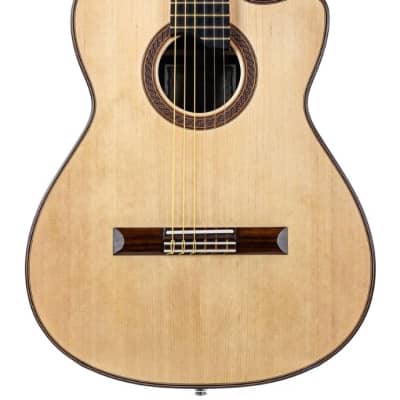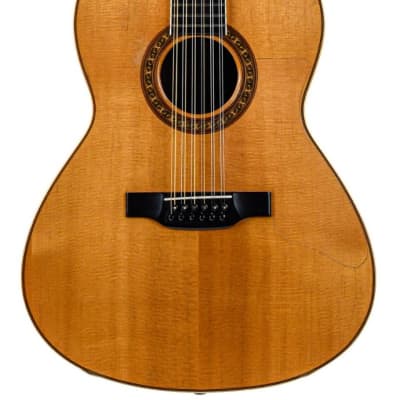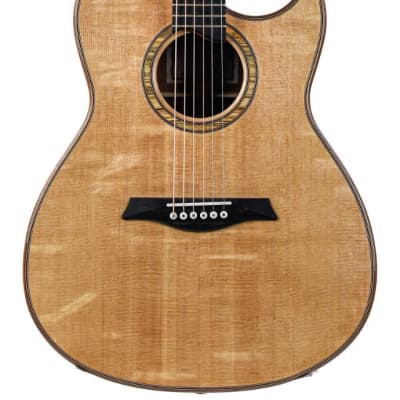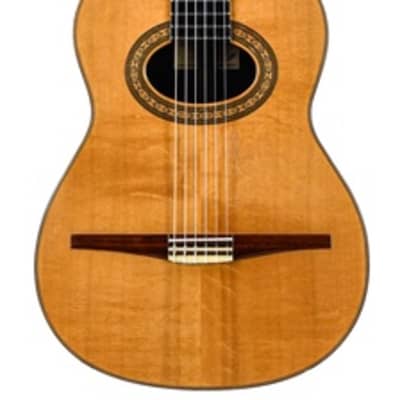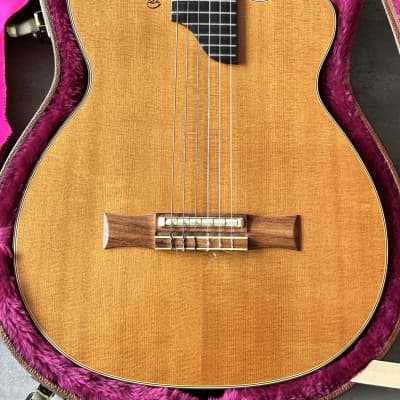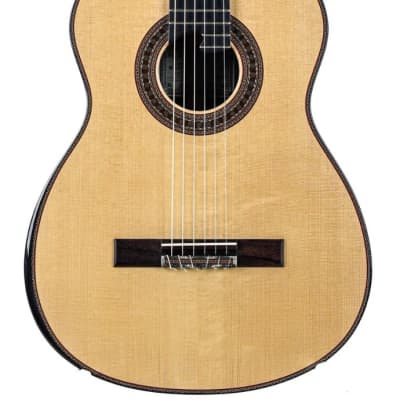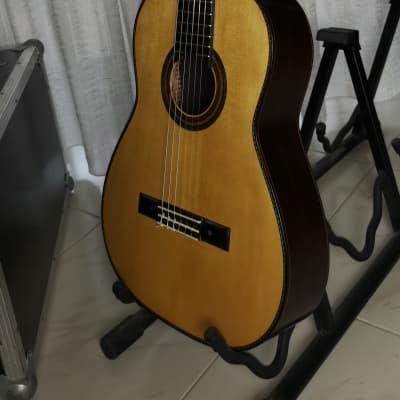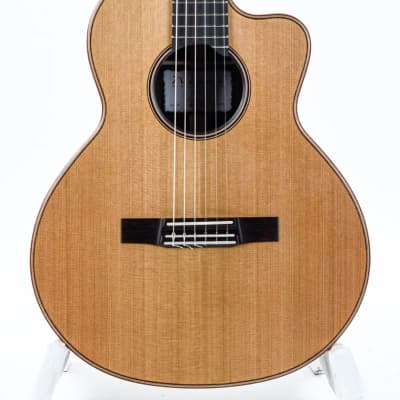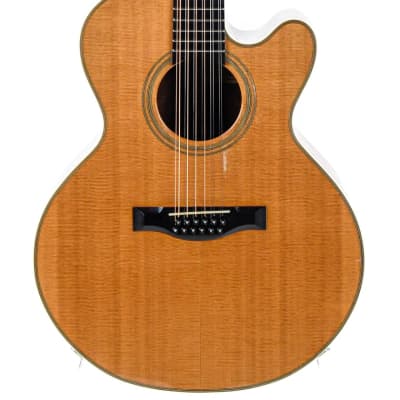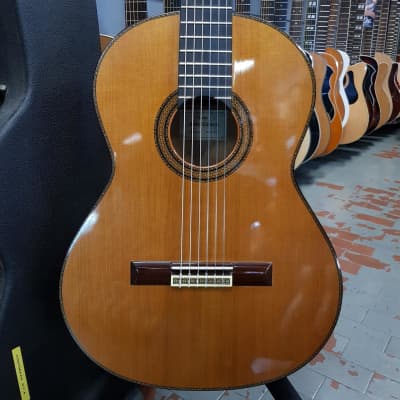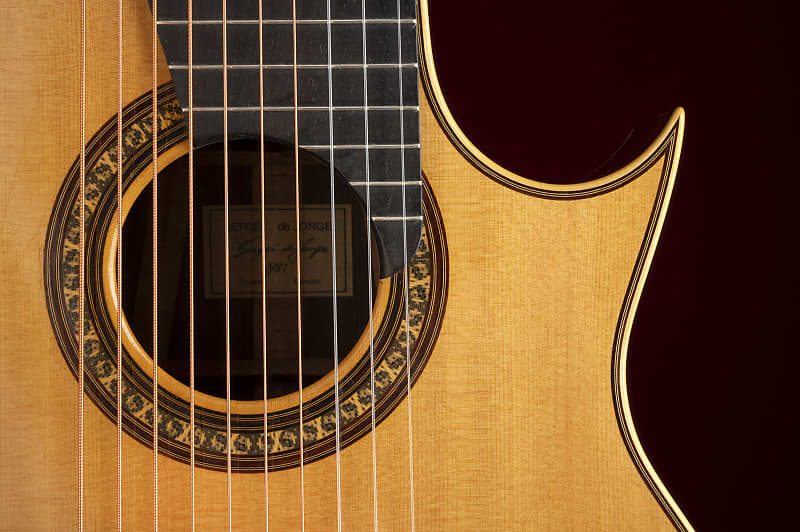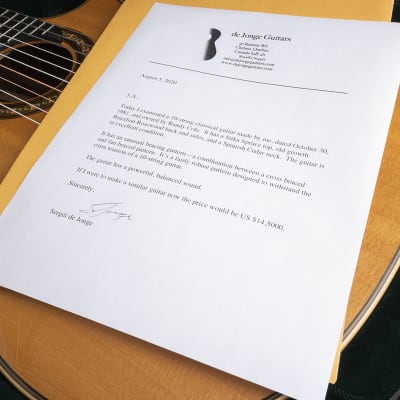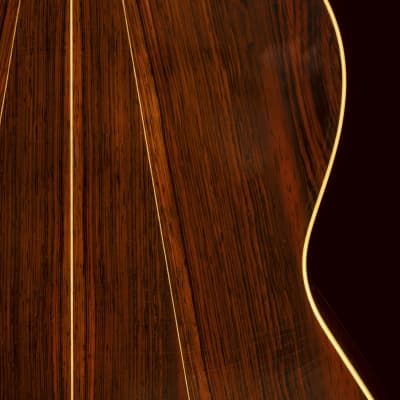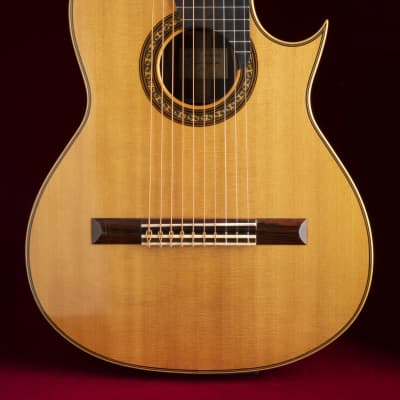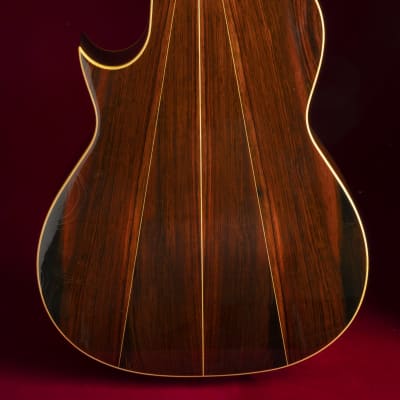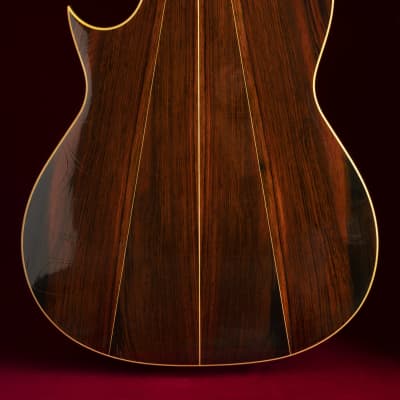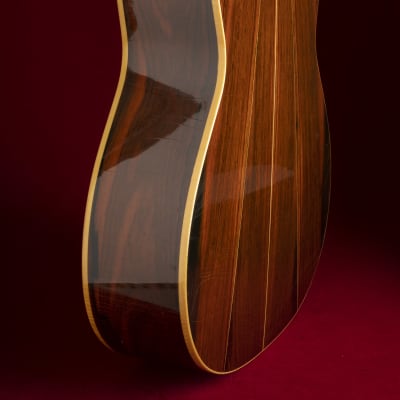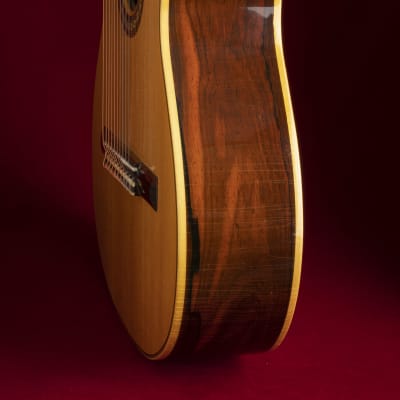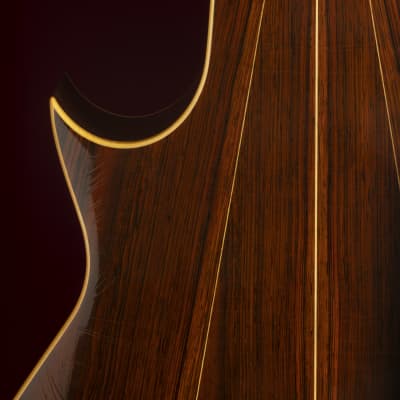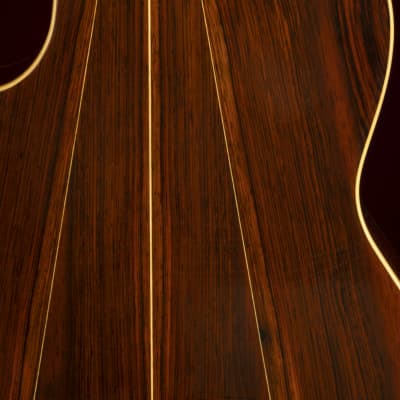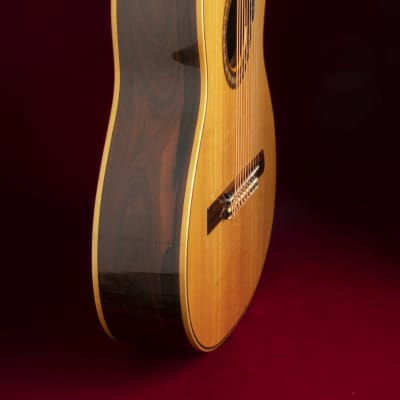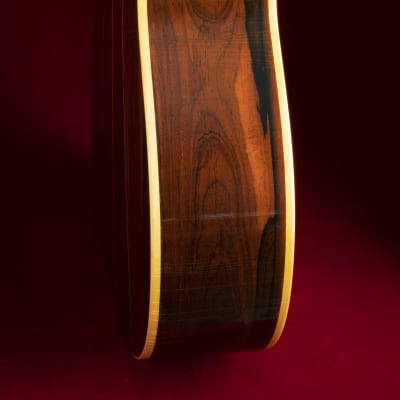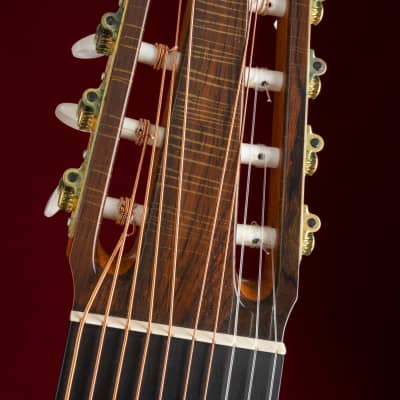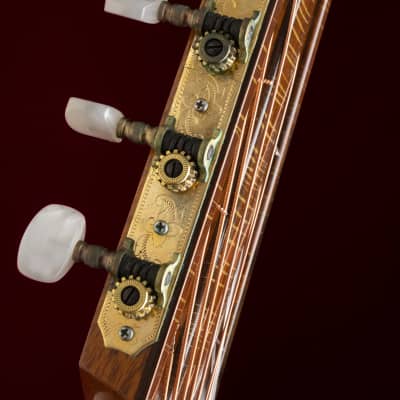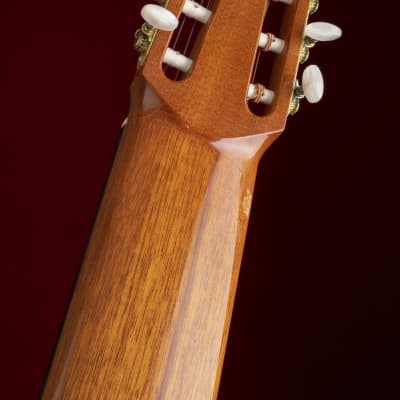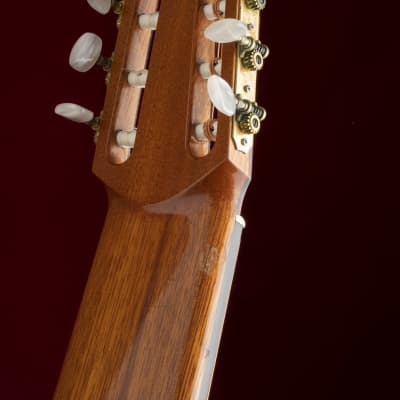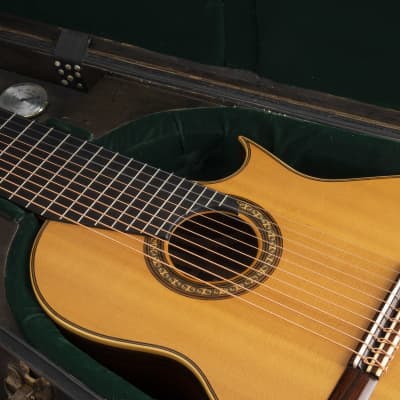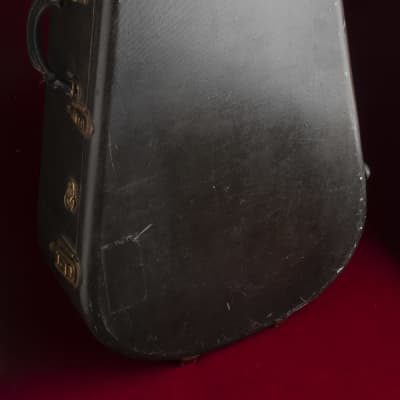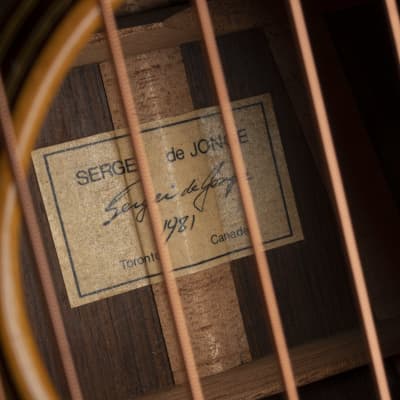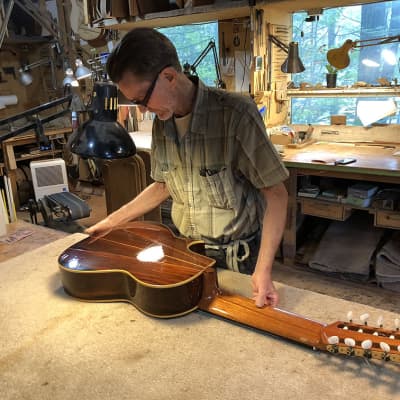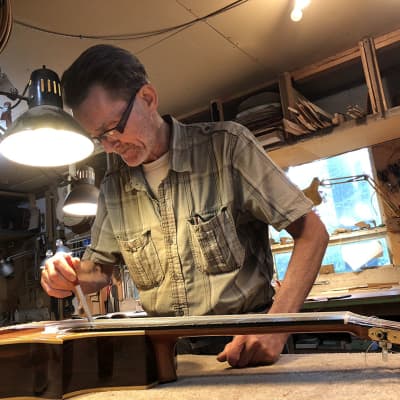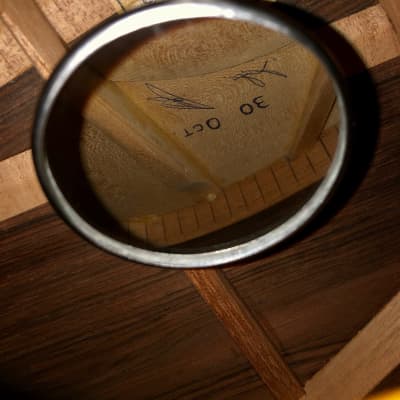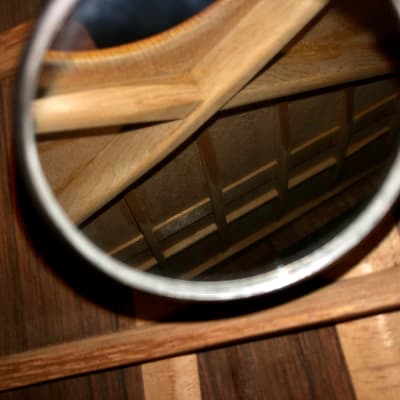On offer is a stunning vintage de Jonge classical, in a 10 string design referred to as a "Yepes" guitar after the Spanish virtuoso Narciso Yeppes. The instrument is inspired by the Yepes commissioned 10-string Ramirez instruments made in the early '70's. However, this guitar, I have learned, is quite unique. Its conception is clearly of the master luthier in all nuance and detail. The guitar is made with a Sitka Spruce top, old growth Brazilian rosewood back and sides, Spanish Cedar neck, and ebony fittings.
I had the great honour of bringing this guitar to the builder, and he inspected it, and shared his thoughts. Mr. de Jonge was very impressed with the exceedingly well preserved condition of the instrument, he felt that it had either not been played very much, or had been meticulously cared for. I pointed out the light finger-wear in the lacquer on the treble side of the strings, and he agreed that it had probably been played, but absolutely babied over its near four decade life.
I have attached a letter of appraisal by Sergei de Jonge, and a photo of him holding this instrument on August 5th, 2020. If this guitar were to be commissioned today, Mr. de Jonge's price would be $14,500 USD.
Mr. de Jonge was particularly happy to see the guitar after 39 years, and remembered building it. He remarked that it was very loud and rich sounding, and we discussed the bracing pattern of the Sitka top. It has what he called a wide X brace, which is combined with a square grid pattern of light braces on the lower bout. Mr. de Jonge explained to me that almost all of his early instruments had unique bracing patterns. He said that he was interested in trying different concepts and variations to experiment, and we joked about jazz musicians who never played the same solo twice! Although he had a pile of large white cardboard sheets with pattern drawings for his more recent builds, he admitted that drawings from his earlier pieces did not survive the previous shop relocation (to my private dismay!).
At any rate, it's easy to see that the luthier has an incredible depth of skill that permitted him to experiment while still producing extraordinarily valuable and stable instruments. Indeed, many of his guitars command five figure prices today. He told me it's no problem to install hard tension strings on this guitar, which I had done, but was unsure about.
The guitar is immaculately finished in a cellulose lacquer which has checked over time. Back and sides are in rare, gorgeous old growth Brazilian rosewood and wooden binding. Old growth Brazilian like this is simply not seen on guitars these days. The guitar has a deep Florentine cutaway, and a tapered ebony fingerboard with a flat radius.
The inside of the top bears his date of manufacture, October 30th, and is signed by the luthier. Please feel free to contact me for additional large format images of the instrument.

